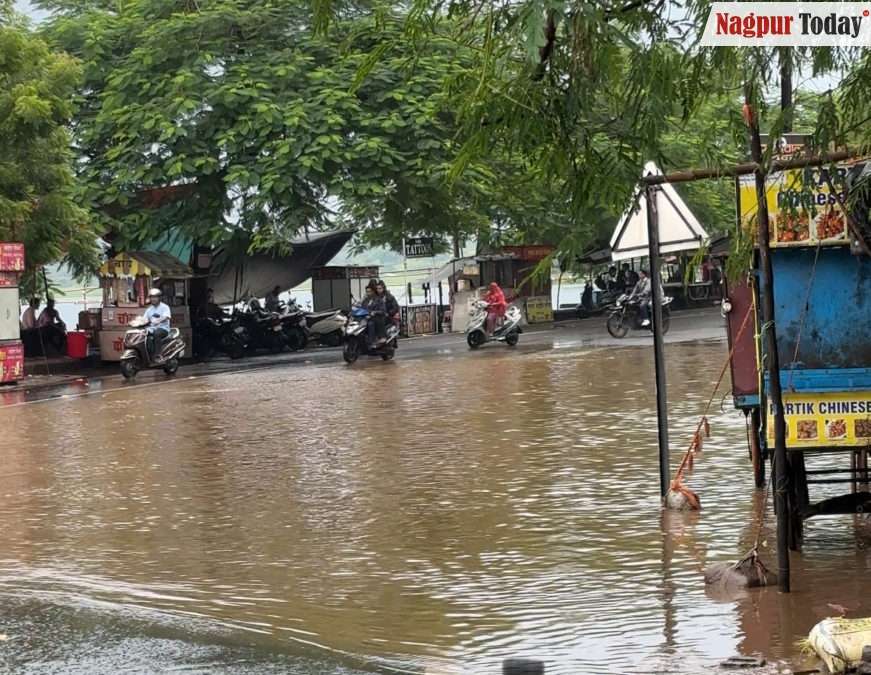
Nagpur: The Second Capital of Maharashtra, spans 227 sqkm with a road network of 3,500 km. Despite its extensive roadways, Nagpur faces a significant deficiency in stormwater drainage coverage. Only 1,100 km of roads, a mere 31%, are equipped with stormwater drains, exacerbating the issue of urban flooding.
According to the Nagpur Municipal Corporation’s (NMC) Public Works Department (PWD), several agencies manage the city’s roads. NMC is responsible for 2,406.12 km, Nagpur Improvement Trust (NIT) oversees 965.32 km, the National Highways Authority of India (NHAI) handles 29.80 km, and the State PWD manages 148.02 km. Of these, only NMC, NHAI, and certain roads under the State PWD are fitted with stormwater drainage systems, leaving NIT without detailed records of its stormwater infrastructure.
This inadequate coverage, coupled with inconsistent maintenance, has led to an increase in waterlogging and flooding across Nagpur, especially during the monsoon season. Many residents have voiced concerns about water entering their homes due to elevated cement concrete roads, further complicating the situation.
In response, the NMC has introduced a new drainage system under phase-IV of its ongoing road construction projects. This move aims to mitigate the growing flood risks by improving the city’s stormwater drainage infrastructure, especially in flood-prone areas.
NMC’s Chief Engineer Leena Upadhaye outlined plans to install reinforced cement concrete (RCC) pipes and cement concrete drains along both sides of the newly constructed roads. The drainage system will use pipes with diameters of 600mm and 450mm to prevent waterlogging in areas most affected by height disparity between roads and homes.
The initiative comes in response to mounting complaints from residents across the city. The construction of cement roads has led to raised road heights, causing water to flow into homes, particularly those with lower plinth levels.
The NMC’s proposed solution has been backed by a study conducted by AD Vasudevan from the hydraulic department of Visvesvaraya National Institute of Technology (VNIT). After reviewing the drainage system in areas like Bharat Petrol Pump to Joggers Park and Gulmohar Hall to Wardha Road, Vasudevan confirmed 450mm pipes are adequate to handle stormwater runoff. The study also suggested similar upgrades for other areas experiencing flooding due to road construction.
To ensure drainage, NMC plans to complete the installation of RCC pipes before proceeding with road construction. Drainage work will start from the point where rainwater is drained, ensuring flow of water does not impact nearby homes. For properties with plinth levels lower than the road height, a chamber system will be introduced, where water from the home is channelled into the roadside drain via a 150 mm plastic pipe.
The NMC will also install rainwater harvesting wells along pedestrian pathways to aid in groundwater recharge.
With the city’s rapid urbanization, the need for comprehensive and effective drainage systems has never been more pressing. The NMC’s efforts, though commendable, will require consistent monitoring and collaboration among all agencies to ensure long-term flood control and citywide improvements.














